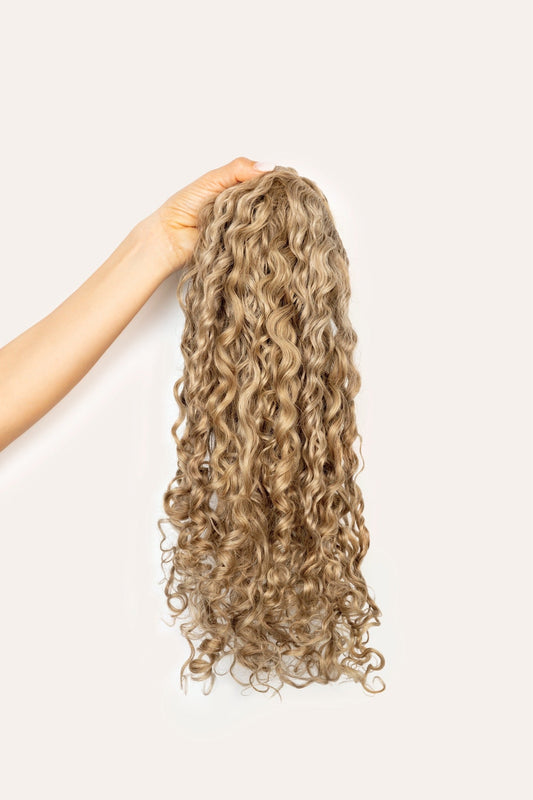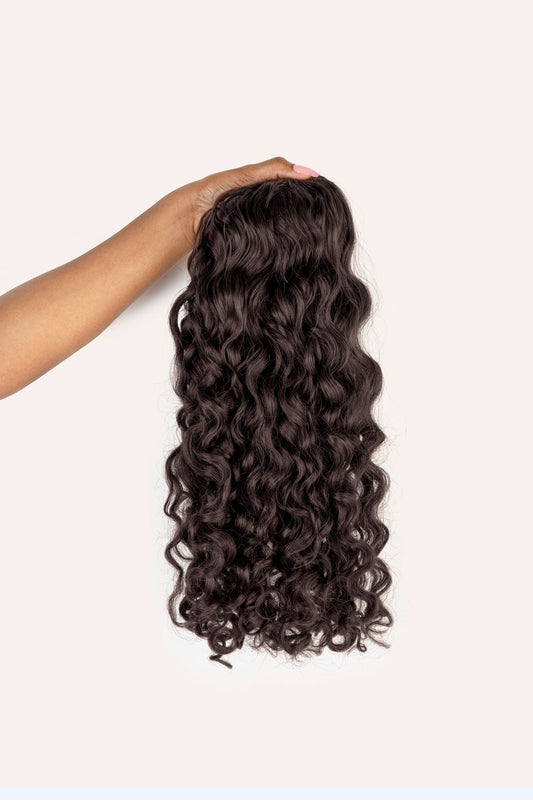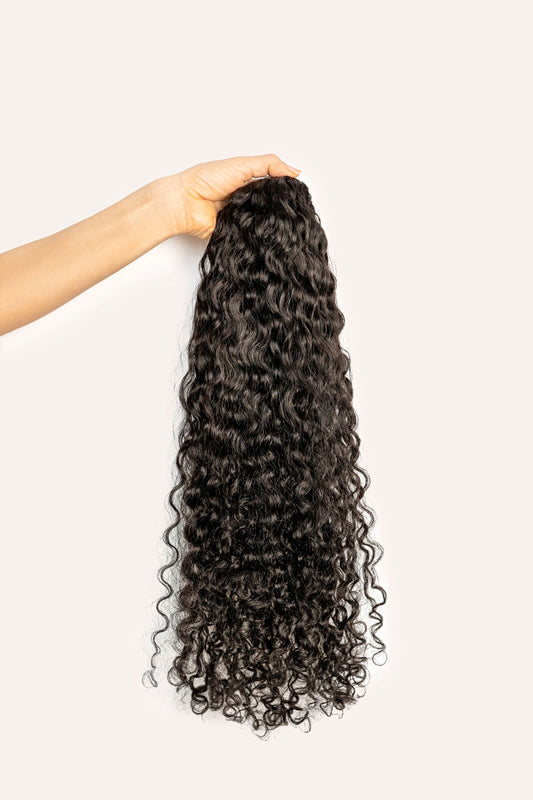We’ve all been there: We see a gorgeous head of perfectly colored natural curly hair, and we’re struck with inspiration. We google up a storm, set up a Pinterest, watch every YouTube video imaginable and become a momentary addict of Brad Mondo. But what we haven’t yet found is a full breakdown of different coloring techniques used on curls - from ombre to balayage, to hand painting, and everything in between.
The art of coloring curly hair is complicated, but in the end can be so worth it. As we know, curly hair is much more delicate, so the methods for coloring curly hair require a bit more care. Use of foils and traditional highlighting, for example, can risk lifting the cuticle too quickly, causing damage and over-processing, that can effect your hair’s ability to hold moisture and even potentially cause loss of your curl pattern. Everything you’ll find below involves processing in open air to keep those beautiful locks looking gorgeous!
We know that you may be lost in an overwhelming sea of options. But never fear, we’ve got your back. Let’s talk about how to pick the best option for you based on your curls, and chat through how to adapt your curl maintenance post color.
1. Ombre
This method takes its name from the French word for “two-toned.” Ombre for curly hair is a technique that features a gorgeous gradient from the top down. The main feature is a darker shade at your roots that gradually becomes lighter.
With your colorist, you can decide whether you want to go striking with bold colors, or more subtle. One thing to know about the ombre technique is that because it goes all in, it will require a lot more touch ups. Though curly hair has the added benefit of shifting the line of color demarcation that our straight haired sisters struggle with, you’ll still have to be in the salon chair a lot more than you would with other techniques below.

2. Balayage
Long heralded as a treasured curly hair coloring option, the balayage technique is a universal hit and classic. It allows your natural curls to shine beautifully with beautiful high and low tones, and also provides a softer alternative to ombre coloring.
Balayage is the method where hair color is painted onto hair strands to create a gradient, natural looking highlight effect on your hair. The word ‘balayage’ is French, and literally means “to sweep” or “to paint.” Balayage is great because it provides softer, less noticeable spaces of regrowth than traditional highlights.
With the balayage technique, your colorist will hand paint highlights onto your hair. This achieves a natural gradient of lightness as your hair goes towards your ends, and emulates the natural sun kissed glow of a summer spent on the beach. As far as coloring techniques go, this one can look extremely natural on curls, when done by an experienced curly hair stylist.

3. Pintura / Hand Painting
Though it’s somewhat similar to balayage, the main difference between that method and pintura/hand painting hair is in the amount of hair that gets colored at a time. Pintura is a highlighting hair color technique that gently and delicately gives you beautiful colorful curls. Pintura literally means “painting,” and it lives up to its name, as your stylist will be hand painting each individual curl. This is a great solution because it cuts down on the time you’ll spend in the salon for touch ups, but also allows you and your stylist to create a gorgeous and completely unique look. Another added benefit is that you can go right to the roots with this method. It’s ideal for both full looks and touch ups (your colorist can, for example, just paint what has grown out) and less chemical color means less damage in the long run.
As we mentioned, both methods involve hand painting curls, but with pintura lightener is applied first at the roots, rather than at the mid-shaft with balayage. It’s great to use the Pintura on tighter curl patterns, because highlights tend to show up brighter.

How do I take care of curly hair after coloring it?
Since curly hair is already prone to dryness and breakage, you’ll have to amp up your curl routine if/when you choose to go with any of these methods. Check out our past blog posts on hair masks for some extra love that you can shower on your locks.
Are any of these techniques good for curly hair extensions?
Yes! Any of these techniques can work with Bebonias. Because Bebonia curly clip ins are made from real remy human hair, they can be dyed just like your natural curls. A tip to keep in mind: It’s always easier and less damaging to take hair from light to dark. If you’re going to dye your extensions, purchase a shade lighter than the color you intend to dye them to. This will ensure your extensions are less damaged from coloring processes, and make them last as long as possible.



